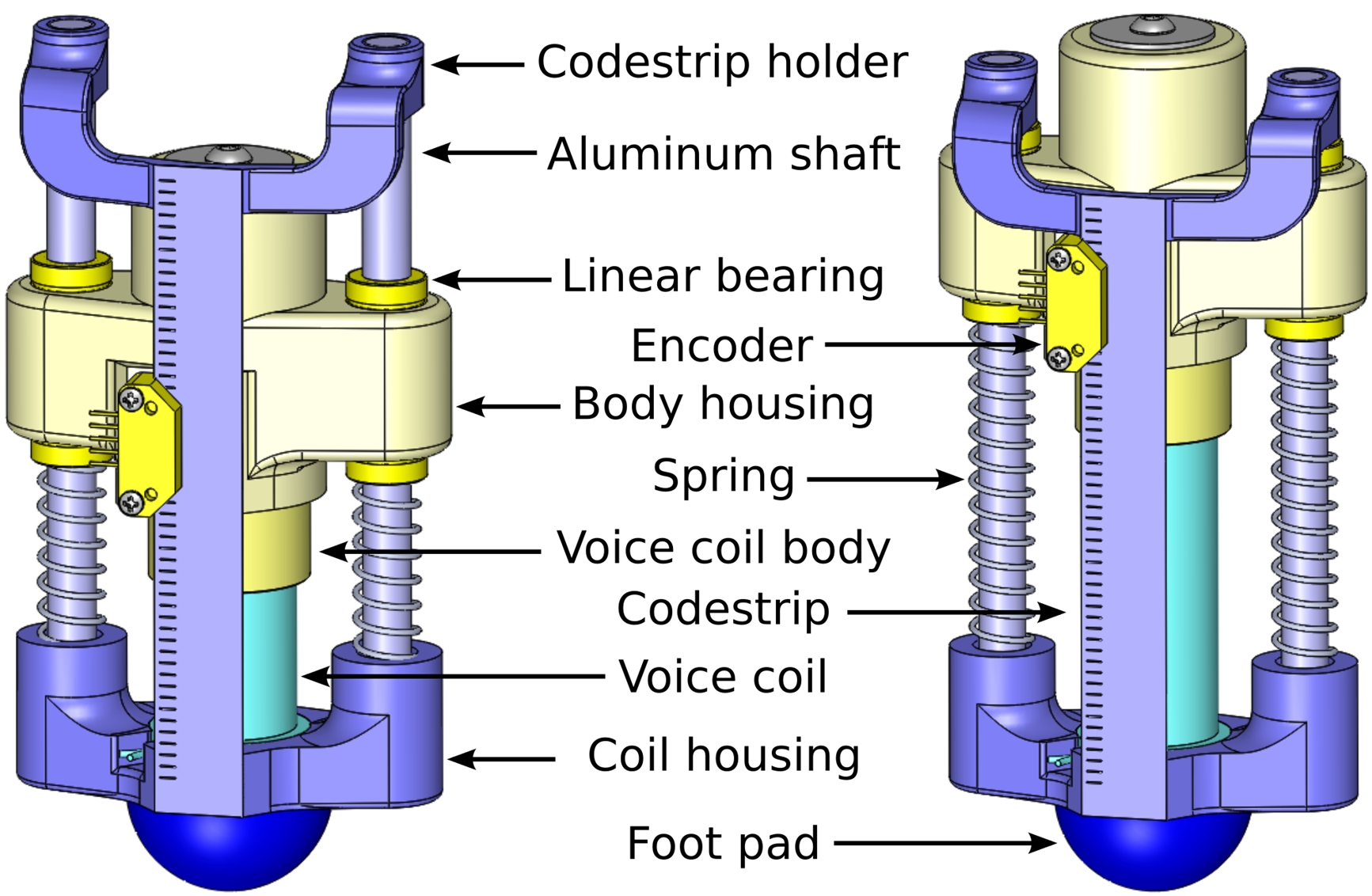Abstract

Among legged robots, hopping and running robots are useful because they can traverse terrain at high speeds and are a benchmark platform for locomotion actuators; if an actuator can power a hopping robot, it can power a walking robot. We aim to create a hopping mechanism for a small-scale, one-legged, untethered hopping robot. A parallel-elastic actuator is an efficient way to do this, and enables the actuator to directly inject energy into the spring, but requires a high-speed, low-inertia actuator. Voice coil actuators are electrically-powered direct-drive translational motors that have very low moving inertia, low friction, can produce force at high speeds, and have a linear force output. These qualities make them ideal candidate motors for a linear elastic actuator in parallel (“LEAP”). Here, we derive an electromechanical model of the LEAP mechanism, develop a simple bang-bang hopping controller, and simulate hopping with a range of spring parameters to find an optimal spring stiffness that maximizes hopping height. We detail our implemented design, and characterize its performance through a series of experiments. We test our robot with different spring stiffnesses, and demonstrate hopping at a maximum steady-state of 3:5 cm ground-clearance (approx. 20% leg length). Our results suggest that the LEAP mechanism may serve the weight-bearing functions of a robot leg.
Copyright Notice
The documents contained in these directories are included by the contributing authors as a means to ensure timely dissemination of scholarly and technical work on a non-commercial basis. Copyright and all rights therein are maintained by the authors or by other copyright holders, notwithstanding that they have offered their works here electronically. It is understood that all persons copying this information will adhere to the terms and constraints invoked by each author’s copyright. These works may not be reposted without the explicit permission of the copyright holder.